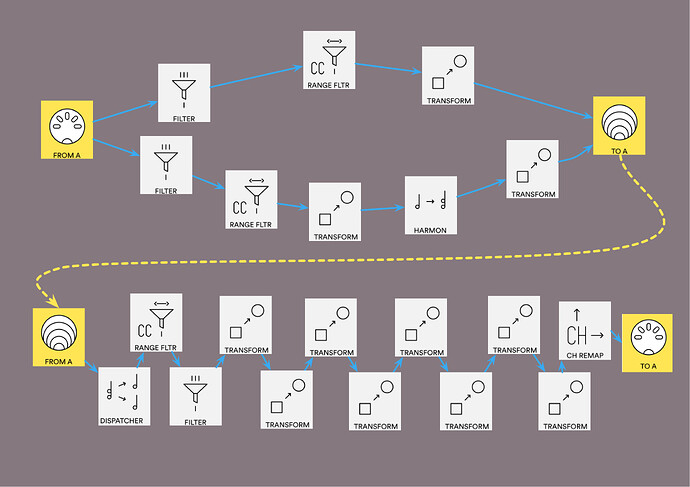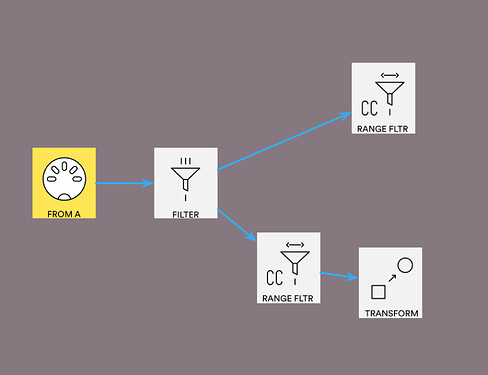hey, @stratblue Nick,
I wonder how may users share your view ![]() ?
?
I thought a consideration on your points above would sit nicer here than in the more general ‘Editor Suggestions’ thread.
I’ve been thinking about @otzcz suggestions on and off, since they were made then expanded on;
your comments:
…a glorified midi merge these days. I open the editor and my heart sinks…
concerned me so…
Using a Giedrius patch as an example
I made a swipe at trying to depict it as a wire diagram:
I’m not sure if this is what you mean, but IMO is raises a bunch of questions
for example
- would the layout be auto or draggable (with multiple selections)?
- would there be a max num pipes per line?
(here I’ve scruffily squeezed 14 onto a line, but I’ve seen patches with over 70 pipes in one pipeline).
And most importantly.. - …while it may give a better sense of flow,
- how much does it aid understanding of what the patch does when one returns to it?
Would a dynamically self-adjusting layout help you patch more intuitively?
I then went on to think about just creating a summary wire diagram:
the ‘pipeline descriptions’ could be pulled from the Description Panel in a similar way to what I floated here:
Given @Giedrius’ comment about the Editor…
..I dunno whether this could be implemented in a less memory-heavy way.
![]() @steve777’s comment (back in 2020) and the number of people who ‘liked’ it then suggest that some people are happy with the Editor broadly as it is. I wonder how much of a game changer a more graphic layout would be?
@steve777’s comment (back in 2020) and the number of people who ‘liked’ it then suggest that some people are happy with the Editor broadly as it is. I wonder how much of a game changer a more graphic layout would be?
PS. Based my thinking more on your comment, Nick, as @otzcz’s ideas suggest something like this…
…which would mean a different Midihub architecture





